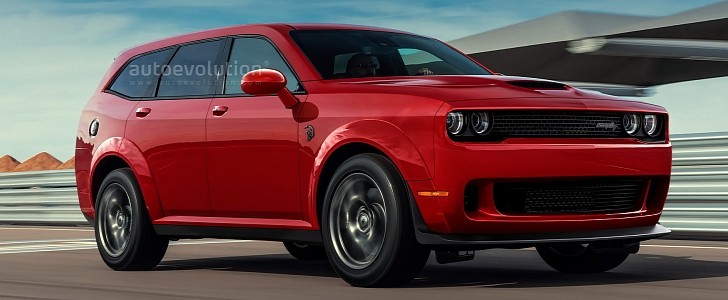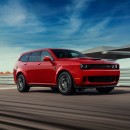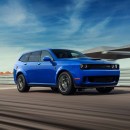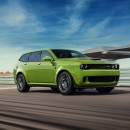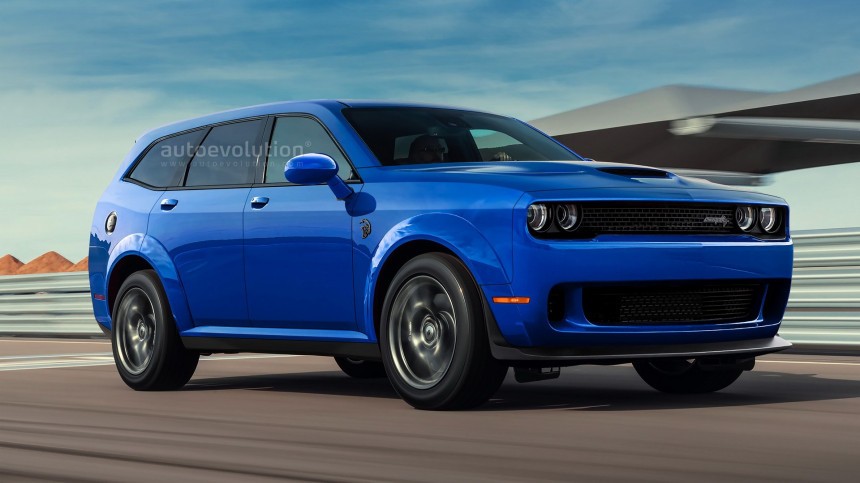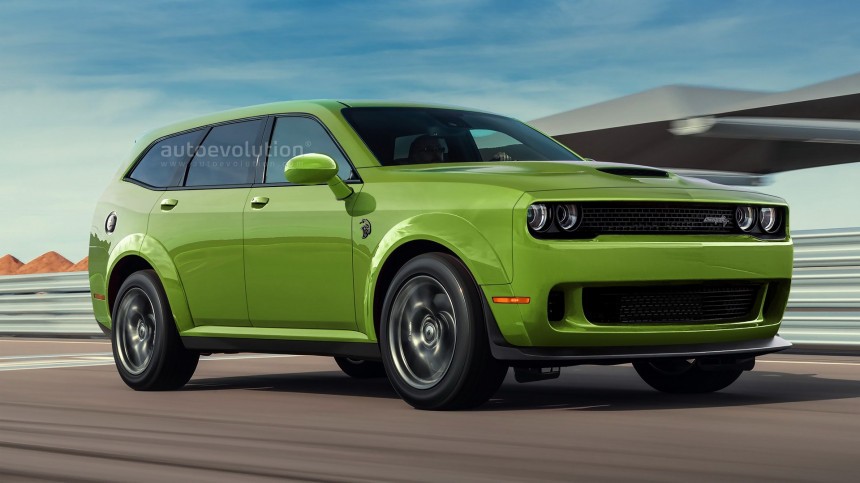We’re back with a new installment in our ‘What If...’ series, this time centered around the third-generation Dodge Challenger, which as you all know, is one of the most popular models in the United States, not only among its peers (muscle cars), but with the industry as a whole.
The Challenger was brought back to life by Dodge in the mid 2000s, as the carmaker felt it was time to add another muscle car to a segment dominated by Ford and General Motors. First came the debut of a Challenger concept car at NAIAS in 2006, followed by a production model roughly two years later.
Underneath its spectacularly retro bodywork stood Chrysler’s LC platform, which was basically a modified version of the LX architecture underpinning the likes of the Dodge Magnum and Chrysler 300 – not exactly ideal for a muscle car, but the third-gen Challenger was never meant to be sporty and agile to begin with.
Fast forward a dozen years or so and the third-gen Challenger would stand as the best-selling model in its class, despite offering fewer body styles compared to the Ford Mustang and the Chevy Camaro. Yet one couldn’t knock the Challenger for not offering enough versatility. Buyers can still choose between several highly appealing specifications, most of which centered around a common passion for American Muscle.
In other words, this is the quintessential muscle car of our generation and it’s quite difficult to imagine a world in which things turned out completely differently, as a direct result of Chrysler’s choices.
But what the heck, let’s give it a shot anyway, because this is what “What If...” is all about – different choices and their hypothetical repercussions.
This particular choice would require Chrysler (DaimlerChrysler, to be precise) deciding against re-entering the muscle car segment in the mid 2000s (please don’t call the Viper a muscle car), opting instead to use this design language on a large SUV that would either be sold alongside the second-gen Dodge Durango or serve as the latter’s replacement.
Actually, we better completely remove the third-generation Durango from our minds for this hypothetical to work.
The result, as demonstrated here in these exclusive renderings by Joao Kleber Amaral, is pretty straight-forward. The artist took a modern-day Challenger Hellcat and forced it to morph into a people hauler, one that also features the muscle car’s widebody aesthetic, with those flared wheel arches.
Does it work though? Visually, this is not the best-looking SUV ever made, but it would still be a blast to drive, when equipped with a 6.2-liter supercharged HEMI V8, which for the sake of argument, would produce the same 710 hp (720 ps) and 645 lb-ft (875 Nm) of torque it does in the Durango SRT Hellcat.
Lesser variants would probably utilize Pentastar V6 and 6.4L HEMI V8 (non-supercharged) units, both of which would be fine from an everyday usability standpoint.
Personally, I’m glad we don’t live in some wacky parallel universe where this so-called Challenger SUV actually exists. Also, if I had to choose between this and the real-world Durango, I would just pick the latter because it’s not a bad-looking SUV, especially in flagship trim.
As for the moral of this story, I think it’s something like: don’t use muscle car visuals to design SUVs, especially when that design language has so many retro elements.
Technically, you can make a dynamic-looking SUV that pays homage to something inherently sporty (like the Lamborghini Urus), but that’s a modern-looking people hauler, inspired by contemporary Lamborghinis. In other words, the Urus would have probably looked ridiculous if it was designed after something like the Lamborghini Miura.
Underneath its spectacularly retro bodywork stood Chrysler’s LC platform, which was basically a modified version of the LX architecture underpinning the likes of the Dodge Magnum and Chrysler 300 – not exactly ideal for a muscle car, but the third-gen Challenger was never meant to be sporty and agile to begin with.
Fast forward a dozen years or so and the third-gen Challenger would stand as the best-selling model in its class, despite offering fewer body styles compared to the Ford Mustang and the Chevy Camaro. Yet one couldn’t knock the Challenger for not offering enough versatility. Buyers can still choose between several highly appealing specifications, most of which centered around a common passion for American Muscle.
In other words, this is the quintessential muscle car of our generation and it’s quite difficult to imagine a world in which things turned out completely differently, as a direct result of Chrysler’s choices.
This particular choice would require Chrysler (DaimlerChrysler, to be precise) deciding against re-entering the muscle car segment in the mid 2000s (please don’t call the Viper a muscle car), opting instead to use this design language on a large SUV that would either be sold alongside the second-gen Dodge Durango or serve as the latter’s replacement.
Actually, we better completely remove the third-generation Durango from our minds for this hypothetical to work.
The result, as demonstrated here in these exclusive renderings by Joao Kleber Amaral, is pretty straight-forward. The artist took a modern-day Challenger Hellcat and forced it to morph into a people hauler, one that also features the muscle car’s widebody aesthetic, with those flared wheel arches.
Does it work though? Visually, this is not the best-looking SUV ever made, but it would still be a blast to drive, when equipped with a 6.2-liter supercharged HEMI V8, which for the sake of argument, would produce the same 710 hp (720 ps) and 645 lb-ft (875 Nm) of torque it does in the Durango SRT Hellcat.
Lesser variants would probably utilize Pentastar V6 and 6.4L HEMI V8 (non-supercharged) units, both of which would be fine from an everyday usability standpoint.
As for the moral of this story, I think it’s something like: don’t use muscle car visuals to design SUVs, especially when that design language has so many retro elements.
Technically, you can make a dynamic-looking SUV that pays homage to something inherently sporty (like the Lamborghini Urus), but that’s a modern-looking people hauler, inspired by contemporary Lamborghinis. In other words, the Urus would have probably looked ridiculous if it was designed after something like the Lamborghini Miura.
